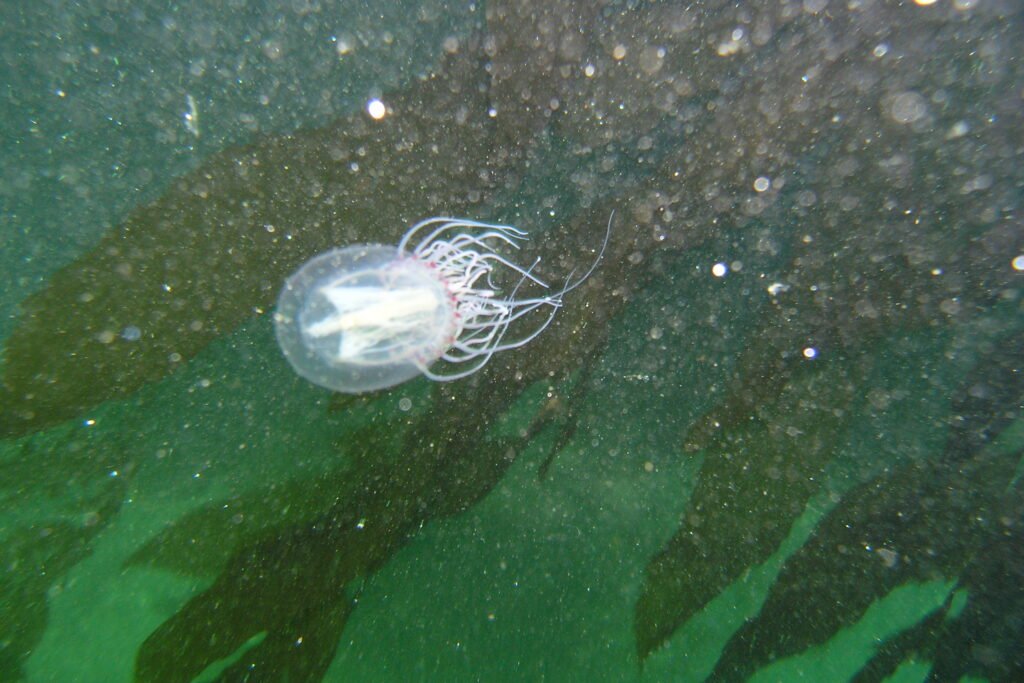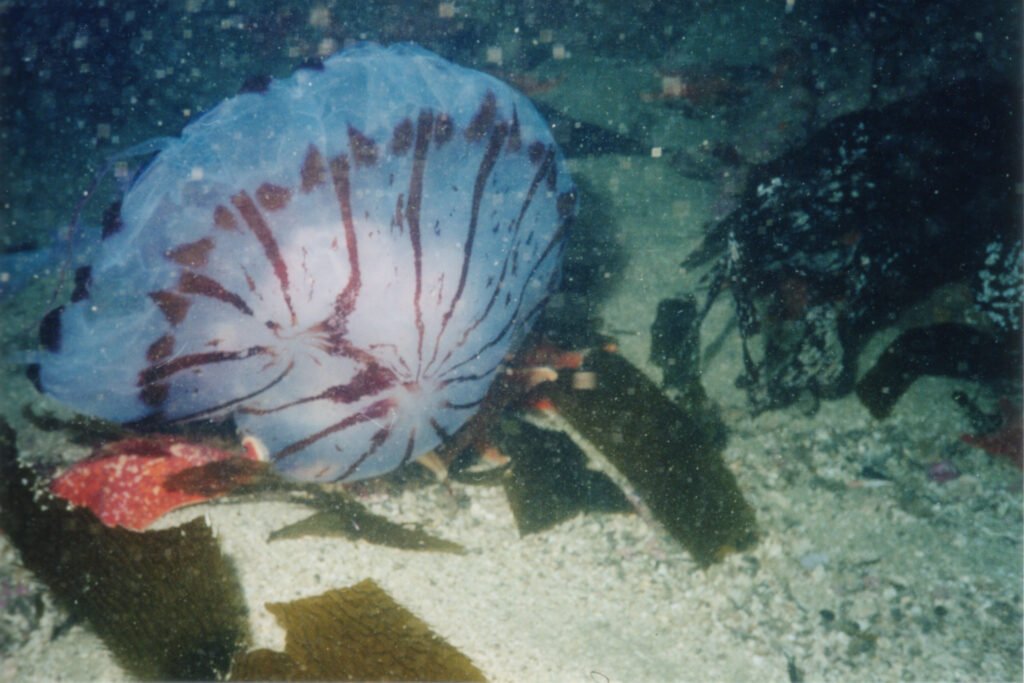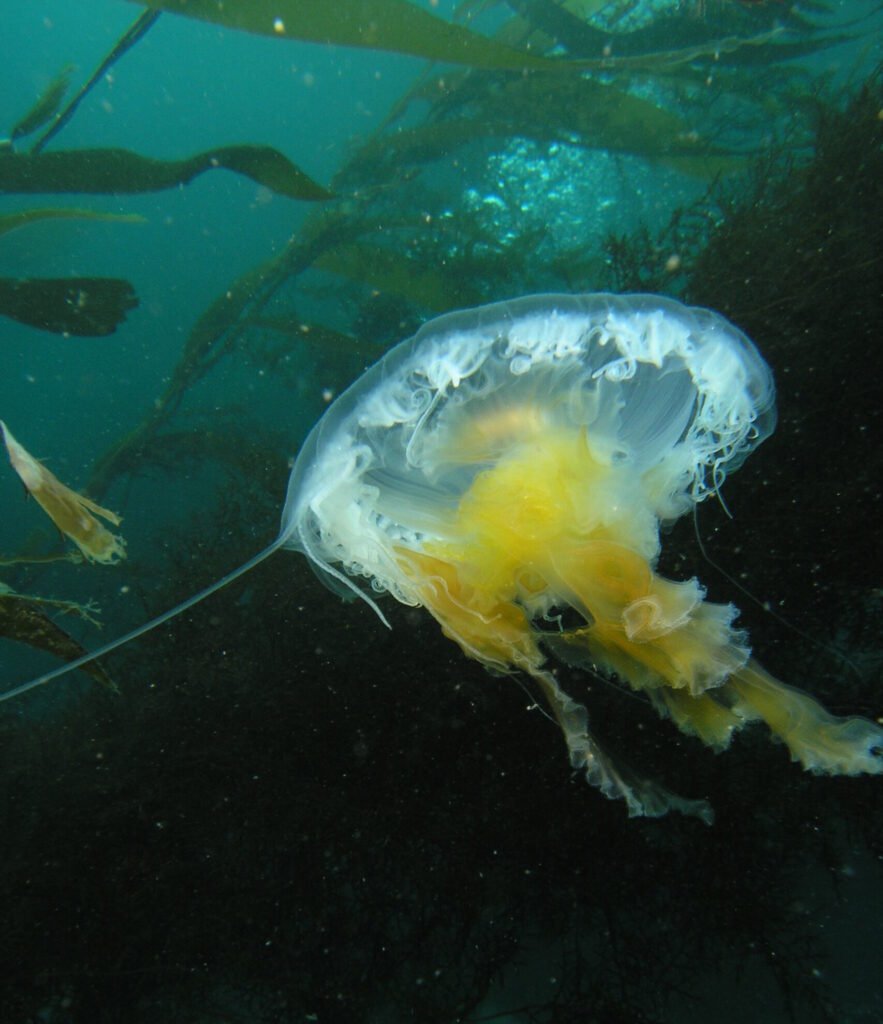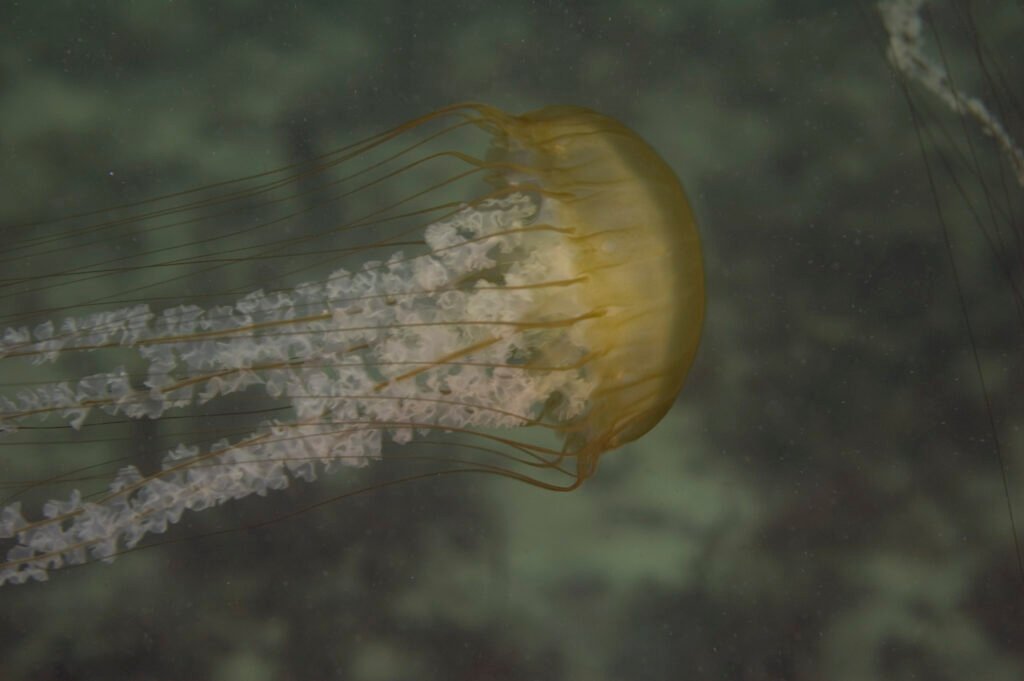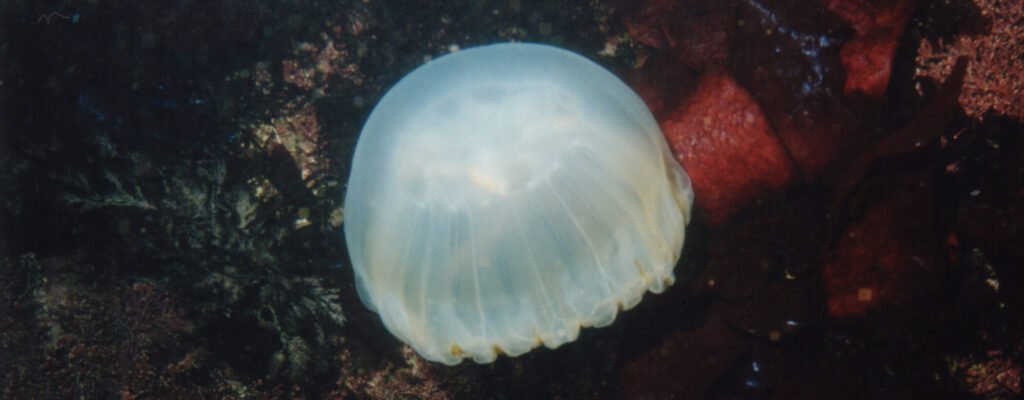Physical Description
The Bell Medusa, Polyorchis penicillatus, features a bell at least as high as it is wide, adorned with evenly-spaced, unbranched tentacles around the margin, totaling around 100. The bell may contract to a very short length or extend to twice the bell length. It possesses a well-developed velum and ocelli (eyespots) ringed with red. Its transparent bell has white parts, while internal organs, like the gonads, may be yellow, yellow-brown, reddish-brown, or purple.
Habitat and Geographical Range
Bell Medusae are found along the eastern Pacific coast, inhabiting open waters and coastal areas with suitable conditions. They may drift passively or swim actively, depending on environmental factors.
What They Eat and How They Breed
Bell Medusae primarily feed on plankton and small organisms, capturing them with their tentacles. They reproduce sexually, with eggs and sperm released into the water for fertilization, leading to the development of free-swimming larvae.
Physical Threat to Humans
Bell Medusae do not pose a significant physical threat to humans. While they possess nematocysts on their tentacles for prey capture, these are generally not harmful to humans and do not result in severe stings upon contact.
